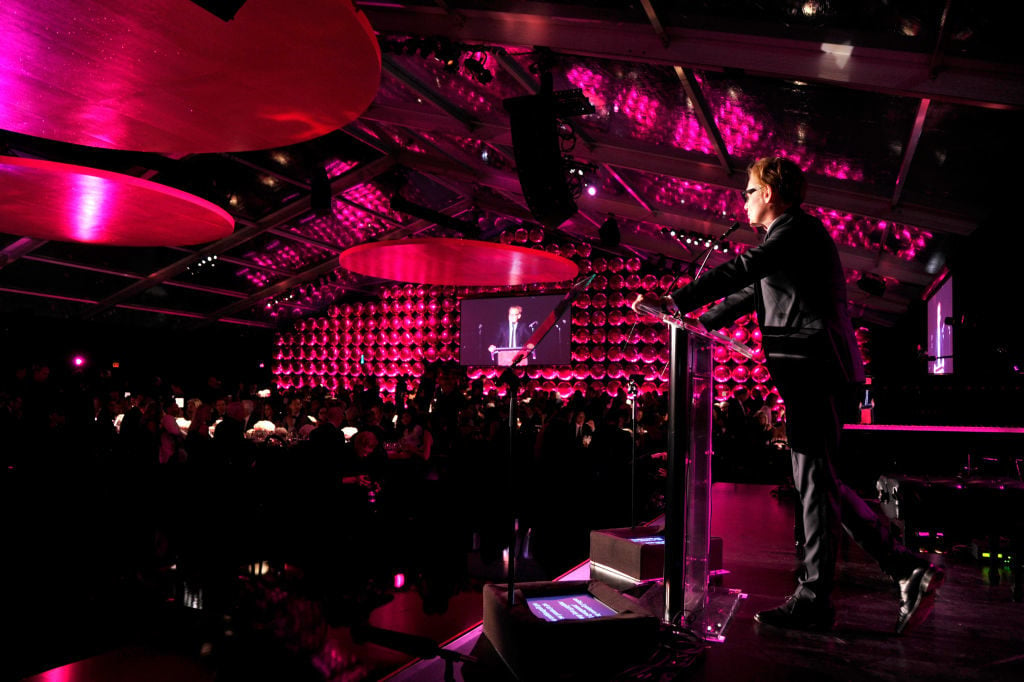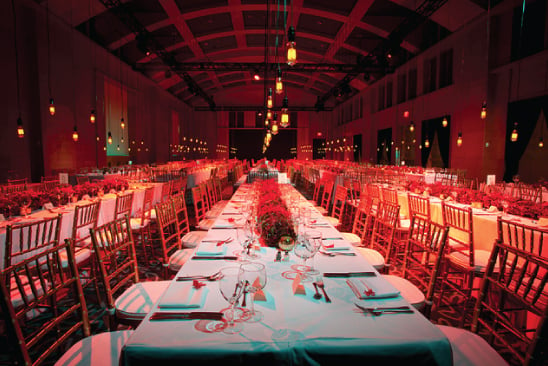Events and Parties
Museums Have Long Relied on the Money They Raise at Glitzy Galas. What Can They Do Now That the Party’s Over?
As benefit events have been moved online or cancelled, arts administrators are pondering the future of fundraising.

As benefit events have been moved online or cancelled, arts administrators are pondering the future of fundraising.

Taylor Dafoe

The artist-designed centerpieces are in storage. The musical guests are staying home. And the chicken, fish, and vegetarian entrees are all off the menu.
For the first year in decades, almost no museum in the United States will hold its annual spring gala, black-tie dinner, or benefit as scheduled. Some events have been postponed indefinitely; others have been cancelled outright. And that’s a problem: special events can constitute as much as 20 percent of a museum’s operating budget, according to institutions surveyed by Artnet News.
But some museum leaders say that the temporary pause on galas may also encourage institutions to become more inventive with their fundraising, and may precipitate lasting change to a model that, they believe, is long overdue for a rethink.
When factoring in the cost of renting space, paying caterers, printing invitations, and dedicating extensive staff time to planning, galas are often not efficient forms of fundraising. “The fact is that many museums have annual ‘fundraising’ events, beloved by members and volunteers, that don’t actually make a profit once you count in the staff time needed to run them,” said Elizabeth Merritt, the founding director and current vice president of the Center for the Future of Museums.
To be sure, galas do bring in cash. And they have benefits that are less immediate and tangible, such as cultivating relationships and creating good memories. One could describe them the same way Winston Churchill famously described democracy: the worst option, except for all the other options that have been tried before.
But now, institutions may be forced to find other ways to encourage donations than orchestrating the rush of a live charity auction or an inspiring speech. “Can museums create efficient and effective models that separate the experience from the request to give?” Merritt asked. “I hope the answer is yes—as such a model would also be far more resilient in the face of disasters.”

MOCA Director Philippe Vergne speaks at the MOCA Gala 2017 honoring Jeff Koons at The Geffen Contemporary at MOCA on April 29, 2017 in Los Angeles, California. Photo: John Sciulli/Getty Images for MOCA.
For many museums, galas and benefits represent a significant portion of the annual operating budget. The Museum of Contemporary Art, Los Angeles’s big benefit—which last year welcomed guests including Katy Perry, Billy Idol, and Sharon Stone—represents roughly 10 percent of its annual purse. (This year’s event was originally scheduled for the third week of May before being pushed to the fall.) The New Museum’s spring benefit, which typically takes over the cavernous Cipriani Wall Street, provides 15 percent of its budget. (It was recently cancelled altogether.) For comparison, a recent survey conducted by the Association of Art Museum Directors estimated admission fees comprised, on average, six percent of a museum’s total revenue.
The Contemporary Austin’s May Art Dinner, a black-tie dinner for approximately 300 guests that has been moved to October, accounts for $1.2 million, or a full 20 percent of the museum’s budget. In the best-case scenario, the Contemporary may indeed see that money eventually. But until then, the institution’s books will be thrown out of balance—and museums in Texas are already starting to reopen.
Indeed, even as museums are juggling the difficult logistics of preparing to welcome visitors for the first time since the lockdown, they are simultaneously trying to figure out whether they can safely hold the fundraising events they rely on this year, or further down the line. When will mass gatherings be allowed? Will the recession leave the donor base in a position, financially, to give? Will they even be in the mood to attend a party? Who wants to toast with a mask on?
“If we are able to hold our Art Dinner in October, we imagine it will likely be modified in some ways,” Margie Rine, the Contemporary Austin’s interim executive director, told Artnet News.
Rine is uniquely positioned to navigate the challenges of fundraising: She also serves as the museum’s director of development. And she agrees the gala model is ripe for change. “Although special events can generate excitement, enhance a museum’s profile, and raise important funds, they also require a great deal of effort and resources and can be adversely affected by weather and, as we are now seeing, by a pandemic,” Rine said. “Although special events have always been part of a museum’s fundraising revenue strategy, I believe they will play a less prominent role.”

The Minneapolis Institute of Art Gala. Courtesy of the Minneapolis Institute of Art.
As IRL events were cancelled this spring, museums and other cultural institutions quickly worked to develop a new kind of benefit event: one that adapts the in-person experience to the virtual realm. Though so far, they have perhaps been less an example of innovation than a product of desperate improvisation.
On the first Monday in May, the Metropolitan Museum of Art’s Fashion Institute was supposed to hold its annual star-studded gala—one that costs $35,000 a ticket and is said to fund the department’s operations for a year. Instead, it launched a virtual challenge, soliciting Met Ball-inspired looks from social media users. #MetGalaChallenge didn’t raise any money for the Costume Institute, but it was a hit publicity-wise. “It was far more accessible and egalitarian than the ultra-exclusive physical event,” noted Merritt. (After initially being “postponed indefinitely,” the real 2020 Met gala was canceled outright last week. Page Six reports that organizers have been reaching out to ticket-holders to encourage them to make donations rather than ask for a refund.)
The Metropolitan Opera was one of the first to transition its annual event online when it held an At-Home Gala in late April, replete with musicians performing on a livestream. Meanwhile, New York’s Tenement Museum offered to send the attendees of its 2020 virtual gala “a Lower East Side box dinner when things return to normal.”
This week, MoMA PS1 is hosting its own virtual benefit in the form of an artist-run “participatory cyberspace sitcom.” The dress code for the variety show, which, according to the invitation, will feature “live performances, music, and ¯\_(ツ)_/¯,” is “webcam glam.”
While the impulse to find alternative ways to host a benefit is understandable, it remains to be seen whether it will be sustainable. “Philanthropy will likely reduce its reliance on special event fundraising,” Rine said, “and increase its focus on building stronger and longer-term relationships with individual donors, foundations, and corporations.”
The National Museum of Women in the Arts in Washington, DC has found some success in this regard. After the institution was forced to cancel its spring gala, which in the past has generated on average $800,000, 100 percent of event’s would-be attendees and sponsors agreed to “transfer their support into fully tax-deductible contributions to the museum,” a representative said.
“We are most grateful to all our supporters and are amazed to report that we experienced no loss from a fundraising perspective,” the representative added. “The support this year was truly a miracle.”